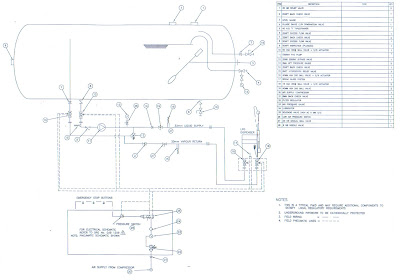Autogas is widely
used as a "green" fuel, as its use reduces CO2 exhaust
emissions by around
15% compared to petrol. One litre of petrol produces 2.3 kg of CO2 when burnt, whereas
the equivalent amount of autogas (1.33 litre due to lower density of autogas)
produces only 1.5 * 1.33 = 2 kg of CO2 when burnt. It has an octane rating (MON/RON)
that is between 90 and 110 and an energy content (higher heating value—HHV)
that is between 25.5 megajoules per litre (for pure propane) and
28.7 megajoules per litre (for pure butane) depending upon the actual fuel
composition.
Autogas is the third
most popular automotive fuel in the world, with approximately 16 million of 600
million passenger cars powered using the fuel, representing less than 3% of the
total market share. Approximately half of all autogas-fueled passenger vehicles
are in the five largest markets (in descending order): Turkey, South Korea,
Poland, Italy, and Australia.
IN PAKISTAN
LPG was allowed to be used
as an automotive fuel in 2005 and first Autogas station became operative in
2010 located at Sialkot. Uptill 2014 there were only four Autogas stations
operating in Pakistan serving around 1000 vehicles. LPG failed to attract
attention of the investors and customers due to extremely cheap prices of CNG
as Pakistan had huge Natural Gas reserves. Pakistan in a decade became the
largest consumer of CNG. This impacted Pakistan's reserves in a negative way
and they receded in a quick span. In November 2013 Oil and Gas Regulatory
Authority issued about 40 NoC's for setting up LPG Autogas stations mainly to
PSO, a State owned Petroleum giant. However, in December 2013 Oil and Gas
Regulatory Authority (OGRA) contrary to the rest of the world where LPG is
promoted, declared LPG a risk to public safety thus banned LPG to be used in
Public transport vehicles, thus closing the era of LPG in Pakistan even before
it started.
LPG AutoGas Station Installation Drawing, Design
 |
| LPG AUTOGAS STATION |
 |
UNDERGROUND LPG SYSTEM PROCESS AND INSTRUMENTATION DIAGRAM
|
 |
| BOQ (UNDERGROUND LPG SYSTEM PROCESS AND INSTRUMENTATION DIAGRAM) |
 |
ABOVEGROUND LPG SYSTEM PROCESS AND INSTRUMENTATION DIAGRAM
|
 |
| LPG AUTO GAS STATION INSTRUMENTATION PART LIST |
Characteristics of LPG
- LPG – Liquefied Petroleum Gas
- Mixture of Propane & Butane (95/5)
- Heavier than air
- Ignition temperature of LPG is 450 0C
Benefits of LPG
- Re-fuelling time in vehicle is similar to petrol
- Vehicle conversion is significantly economical than CNG
- 20 kg LPG gives around 350 to 400 km run.
Why use LPG?
Unavailability of CNG and continuous increase in petrol & diesel prices invoke the need of cheaper alternative fuel.
No comments:
Post a Comment